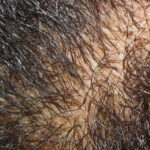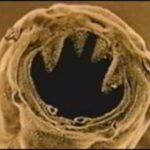When my cat Celeste developed dry, flaky skin, I assumed that cat dandruff was to blame. Celeste’s veterinarian explained that millions of cats suffer from chronic skin diseases that resemble cat dandruff. Small parasites like Cheyletiella– a small, contagious mite that irritates the skin– cause itchy, flaking skin and minor hair loss. Additionally, chronic allergic conditions like milliary dermatitis can cause symptoms similar to cat dandruff. Cats may also suffer from dandruff-like flaking if they consume a diet that is deficient in omega-three fatty acids; this issue is particularly common in cats consuming reduced-calorie commercial cat foods.
Treatments for cat dandruff vary depending on the underlying cause of the condition; in many cases, the issue subsides within a few weeks without treatment. Cheyletiella dermatitis, one of the most common causes of cat dandruff, responds to treatment with pesticide compounds that eliminate the mites’ ability to thrive and reproduce. Natural pesticides– including essential oils of clove, neem and lavender– may help to eliminate dandruff caused by Chelyetiella. In severe cases of cat dandruff, a veterinarian may prescribe a topical pesticide like Fipronil (Frontline Plus). Note that dandruff-causing mites are extremely contagious, houses with multiple cats may need to treat every individual.
The mites responsible for cat dandruff can also worsen symptoms milliary dermatitis, a common condition similar to eczema. Milliary dermatitis, an allergy-related condition, causes chronic shedding, flaking and itchiness on the uppermost layer of a cat’s skin. Common allergens like dust and grass pollen can trigger outbreaks of milliary dermatitis, but flea bites and Chelyetiella can also trigger this unpleasant histamine reaction. I discovered that my cat suffered from outbreaks of milliary dermatitis triggered by allergen-producing pests– fleas and Cheytiella mites. Her symptoms improved after I eliminated the pests using lavender oil and neem. However, in some cases, a cat with dandruff caused my milliary dermatitis will require treatment with corticosteroids such as prednisone.
Flaking skin may also signal a mild or moderate nutritional deficiency, especially in cats consuming low-fat or dry-only diets. Cats require a diet rich in the omega-three fatty acids eicosapentaenoic acid (EPA) and docosahexaenoic acid (DHA), which are found primarily in grass-fed red meats and cold-water fish. Commercial pet foods, particularly low-fat formulas, generally contain insufficient levels of these essential fatty acids. This common deficiency may deprive the skin of important protective oils and can result in itchiness, flaking and other symptoms of cat dandruff. Pet nutritionists generally treat omega-three deficiency using standard fish oil supplements or specialized pet foods.
Symptoms of cat dandruff do not necessarily signal a medical problem. Like all animals, cats routinely shed old skin and replace it with newer tissue; this tends to be most noticeable during the dry months of winter. Cats who are elderly, injured or obese may not be able to effectively groom themselves and may experience buildup of pale-colored skin flakes. This issue is ultimately harmless, but some pet owners may choose to eliminate these dandruff-like flakes with regular baths and brushing. Mild dandruff may disappear without treatment. However, cat owners should seek a veterinary evaluation if symptoms persist for more than two weeks or if they are accompanied by other bothersome symptoms.



